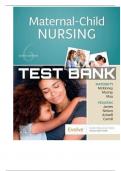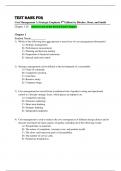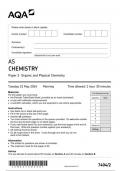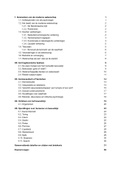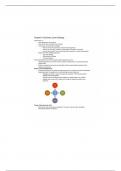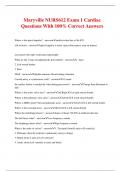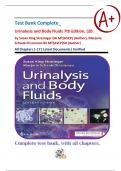Exam (elaborations)
Test Bank For Maternal-Child Nursing 6th Edition By Emily Slone McKinney Chapter 1-55 | Complete Guide Newest Version 2023
- Institution
- TBank For Maternal-Child Nursing 6th Edition B
Chapter 01: Foundations of Maternity, Women’s Health, and Child Health Nursing McKinney: Evolve Resources for Maternal-Child Nursing, 6th Edition MULTIPLE CHOICE 1. Which factor significantly contributed to the shift from home births to hospital births in the early 20th century? a. Puerperal...
[Show more]
